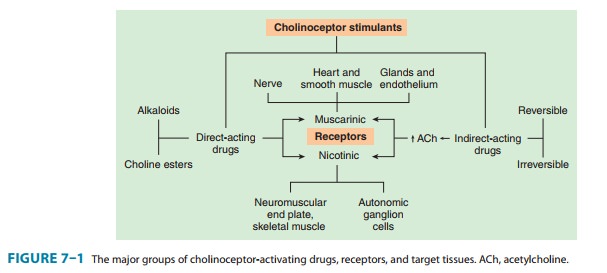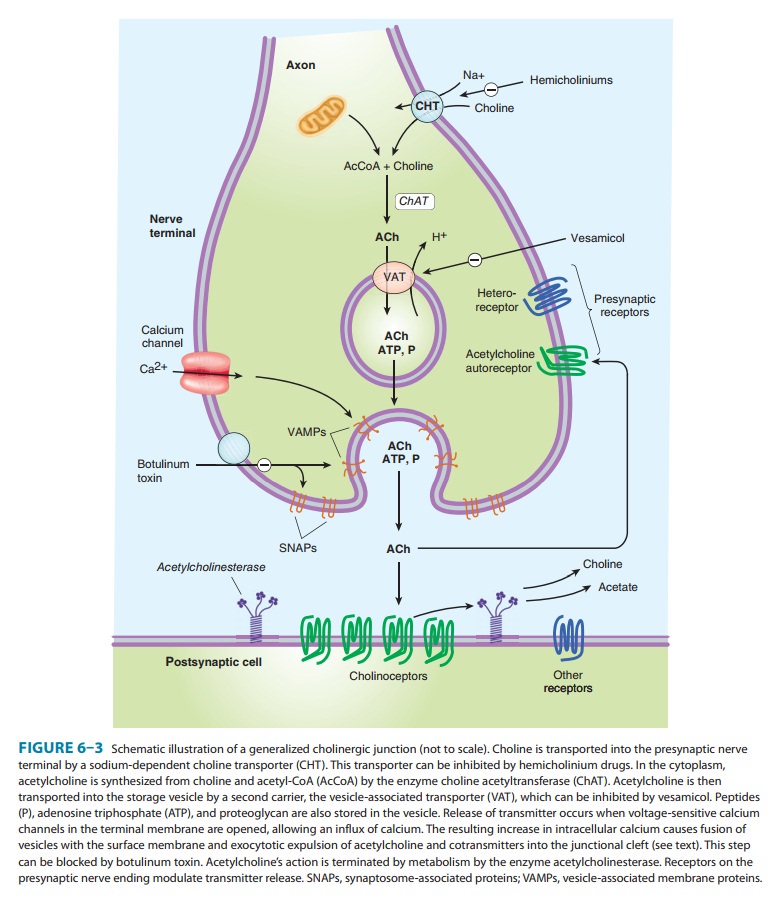Chapter: Basic & Clinical Pharmacology : Cholinoceptor-Activating & Cholinesterase-Inhibiting Drugs
Mode of Action of Cholinomimetic Drugs
MODE OF ACTION OF CHOLINOMIMETIC
DRUGS
Direct-acting
cholinomimetic agents bind to and activate muscar-inic or nicotinic receptors
(Figure 7–1). Indirect-acting agents produce their primary effects by
inhibiting acetylcholinesterase, which hydrolyzes acetylcholine to choline and
acetic acid (see Figure 6–3). By inhibiting acetylcholinesterase, the
indirect-acting drugs increase the endogenous acetylcholine concentration in
syn-aptic clefts and neuroeffector junctions. The excess acetylcholine, in
turn, stimulates cholinoceptors to evoke increased responses. These drugs act
primarily where acetylcholine is physiologically released and are thus amplifiers of endogenous acetylcholine.

Some
cholinesterase inhibitors also inhibit butyrylcholinesterase
(pseudocholinesterase). However, inhibition of butyrylcholinest-erase plays
little role in the action of indirect-acting cholinomimetic drugs because this
enzyme is not important in the physiologic ter-mination of synaptic
acetylcholine action. Some quaternary cholin-esterase inhibitors also have a
modest direct action as well, eg, neostigmine, which activates neuromuscular
nicotinic cholinocep-tors directly in addition to blocking cholinesterase.

Related Topics